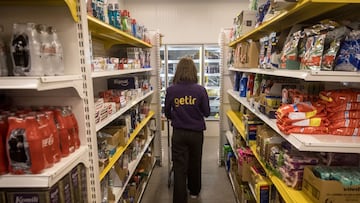What is the income limit for food stamps in California 2021?
Ten percent of the population in California receives food stamps. Next year beneficiaries will see a historic increase in the value of their benefits. What is the income limit?


Around 4.3 million Californians relied on CalFresh, or SNAP benefits in July 2021. In 2019, the figure was 3.3 million, highlighting the toll the pandemic has had on families in the Golden States.
Around two-thirds of the households claiming benefits have children. When schools closed in March 2020, the state increased the benefit amount as families would not be able to rely on free breakfast and lunch programs. Rather than adjusting the benefits on an individual level, the state opted to increase all households to the maximum benefit amount based on the number of people in their household.
What is the minimum CalFresh benefit?
| Number in Household | Benefit Amount |
| 1 | $250 |
| 2 | $450 |
| 3 | $658 |
| 4 | $835 |
| 5 | $992 |
| 6 | $1190 |
| 7 | $1316 |
| 8 | $1504 |
| Additional person | +$188 |
Source: Cal Fresh
In October, the state announced that it would make permanent increases to the benefits. Starting in November those on CalFresh will see an average increase of $95 applied to their benefit amount.
Through a partnership with Code for America, the state has revamped the CalFresh website, making it much easier for those in need to apply for benefits.
Income limits
In California, eligibility to receive CalFresh benefits depends on the number of people living in a household and its total income.
Income limits for CalFresh
| Number in Household | Income Limit |
| 1 | $16,744 |
| 2 | $22,646 |
| 3 | $28,468 |
| 4 | $34,450 |
| 5 | $40,352 |
| 6 | $46,254 |
| 7 | $52,156 |
| 8 | $58,055 |
Source: Cal Fresh
California has one of the highest minimum wages in the country. At fourteen dollars an hour, one would have to live in a household with three people before reaching the threshold covered by the minimum wage for someone who works forty hours a week.
School lunches
As schools reopened in California, the state announced that it would allow any child regardless of income to register for free breakfast and lunch programs. With the CalFresh benefit increases and the free meal expansion, the Public Policy Institute of California has estimated that 90,000 children could be lifted out of poverty.
In 2021, fifty-eight percent of students in California relied on free lunch programs. Experts believe that this figure and current requirements leave out many students. Studies have found that around 63 percent of California’s student body could benefit from the program, but this number could also be an underestimation.
Related stories
Earlier this year, the California state legislature became the first state to implement a universal school meal program. Advocates applauded the state's move, with Oakland Unified School District spokesman John Sasaki saying “It’s such good news that everybody gets food with no strings attached, but to be able to do it in a way that nobody is called out is the best thing about this."
The state will still require families to fill out applications so that they can distinguish between which students will have their meals paid by the federal government and which California will pay for.

